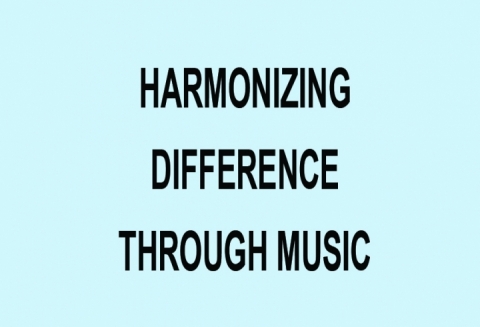“Harmonizing Difference Through Music”
Susan M. Asai, Northeastern University
Boston, Massachusetts U.S.A.
“Harmonizing Difference Through Music”
Susan M. Asai, Northeastern University Boston, Massachusetts U.S.A.
Music is a powerful force that can both unify and divide. We have the opportunity here to explore the unifying potential of this art form. To this end, I would like to focus on our shared humanity and the power of music to connect us. A premise I would like to put forward is that as humans we need to be recognized for our uniqueness first, before we are willing to bridge to others.
The cultural work I do in my classes at Northeastern University with students and my broad experience of interacting with musicians from different cultures informs the core of what I want to say. Exposing students to the historical, social, and cultural background of cultures we study sets the contextual framework for understanding why a music sounds the way it does. Learning about the particularities of a culture’s music broadens the students’ concept of music and what music can express. The uniqueness of each culture’s music is recognized and brought to some level of appreciation. The process of fostering cultural sensitivity toward cultures other than our own is key. This I believe is the first step toward intercultural dialogue.
I would like to suggest a two-step process in setting up conditions for nurturing affinity and building cooperation among nations. The first step involves organizing musical exchanges between cultures accompanied by informative sessions that educate people about the cultural context and meaning for what one will hear and experience. This step is crucial for introducing what is important to each culture as it is expressed in music. The importance of acknowledging cultural particularities before collectively tackling broad issues preserves a sense of self within the global village.
Mark Slobin in his book, Subcultural Sounds: Micromusics of the West, supports the second step I would like to propose; that of recognizing our broader human connections and finding common ground through music. He states, “…while group histories and social forces separate us, our personal expressive lives are inextricably tied to similar networks and patterns of possibilities…” (1993: 13). Music provides a fertile field for identifying aspects that communicate cross-culturally and uncover our affinities on a broader human level. Shared affinities could include a view of music as: 1) an outlet for grief, joy, or love; 2) a healing force; or 3) as integral to recreation, ritual, or work. Our basic human desire and need for music could lay the foundation for cooperation in our quest for sound solutions that could bring about change.
The challenge of setting up the right conditions for intercultural dialogue through music is daunting. UNESCO’s efforts to preserve intangible cultural traditions in cultures around the world preface our efforts here. Many scholars would say that indigenous expressive forms most embody what is unique in each culture, but determining what musics to put forward for exchange and who in the culture gets to decide could prove to be problematical. If we are talking about musical exchanges between nation states as a starting point for eventual intercultural dialogue, then the logistics of proper musical representation in countries with diverse populations and complex diasporic communities could present challenges to launching such projects.
In our discussion today, I would also like to bring attention to the issue of hegemonic displays of cultural preference. It is our responsibility to be open to a variety of musical frameworks for exchange. European classical music, while considered an elevated music that symbolizes progress and advancement, to populations in many developing countries it is a referent to a colonial legacy that continues to impact them. I would like to caution against having Western classical music serve as the primary orientation for any recommendations or projects we
discuss here. If one of our goals is to cultivate cultural sensitivity, we must be more egalitarian and flexible in our vision and more informed of the multi-faceted and complex nature of fostering current expressive culture. I would like to promote building relationships that are non- hierarchical, placing all nations states or cultures on equal footing. Only then can we set up conditions of intercultural affinity in which people reach out to one another across national borders. The face-to-face contact involved in musical exchanges would facilitate dialogue that intersects with the cultural, personal, and human.
Our task today is a lofty and important one. I hope we can find creative ways to utilize music that promotes effective communication and problem-solving, and that taps into our humanity and desire for a cooperative, peaceful planet.
Bibliography
Slobin, Mark. Subcultural Sounds. Micromusics of the West. Hanover and London: Wesleyan University Press, 1993.

